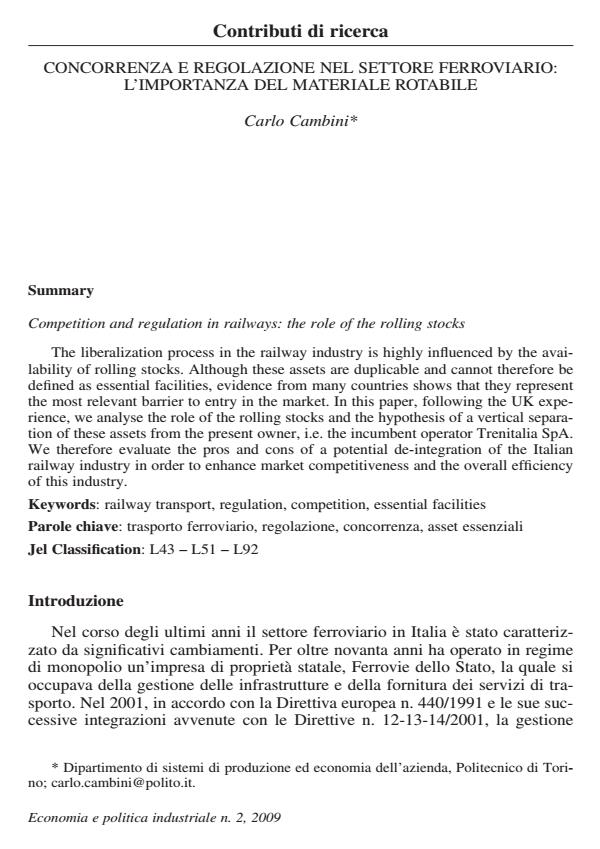Concorrenza e regolazione nel settore ferroviario: l'importanza del materiale rotabile
Journal title ECONOMIA E POLITICA INDUSTRIALE
Author/s Carlo Cambini
Publishing Year 2009 Issue 2009/2
Language Italian Pages 26 P. 47-72 File size 620 KB
DOI 10.3280/POLI2009-002004
DOI is like a bar code for intellectual property: to have more infomation
click here
Below, you can see the article first page
If you want to buy this article in PDF format, you can do it, following the instructions to buy download credits

FrancoAngeli is member of Publishers International Linking Association, Inc (PILA), a not-for-profit association which run the CrossRef service enabling links to and from online scholarly content.
Competition and regulation in railways: the role of the rolling stocks - The liberalization process in the railway industry is highly influenced by the availability of rolling stocks. Although these assets are duplicable and cannot therefore be defined as essential facilities, evidence from many countries shows that they represent the most relevant barrier to entry in the market. In this paper, following the UK experience, we analyse the role of the rolling stocks and the hypothesis of a vertical separation of these assets from the present owner, i.e. the incumbent operator Trenitalia SpA. We therefore evaluate the pros and cons of a potential de-integration of the Italian railway industry in order to enhance market competitiveness and the overall efficiency of this industry. .
Keywords: railway transport, regulation, competition, essential facilities
Parole chiave: trasporto ferroviario, regolazione, concorrenza, asset essenziali .
Jel Classification: L43 - L51 - L92
- The rise and fall of Interregio. Extensive open-access passenger rail competition in Poland Marcin Król, Jakub Taczanowski, Arkadiusz Kołoś, in Research in Transportation Economics /2018 pp.37
DOI: 10.1016/j.retrec.2018.06.008
Carlo Cambini, Concorrenza e regolazione nel settore ferroviario: l'importanza del materiale rotabile in "ECONOMIA E POLITICA INDUSTRIALE " 2/2009, pp 47-72, DOI: 10.3280/POLI2009-002004